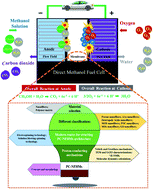Nanofiber hybrid membranes: progress and application in proton exchange membranes
Abstract
Proton-conducting nanofiber hybrid membranes (PC-NFHMs) as promising candidates, are widely used for proton exchange membrane fuel cells (PEMFCs), combining the properties and some synergism from interactions between nanofibers and the polymer matrix. The PC-NFHMs possess superior characteristics compared to individual ion-conducting polymeric membranes or free-standing electrolyte inorganic films. Herein, this critical review presents the progress of PC-NFHMs, with specific focus on the combinations of multifunctional nanofibers and emerging proton transfer carriers, such as metal organic frameworks (MOFs), porous organic cages (POCs), polyhedral oligomeric silsesquioxanes (POSSs), amino acids (AAs), etc. The unique properties and performance of the different types of multifunctional nanofibers and their derivatives are described with respect to their use as PC-NFHMs. Besides, relevant characterization studies including small angle X-ray scattering (SAXS), nuclear magnetic resonance (1H-NMR), and molecular dynamics calculation (MDC), have been briefly summarized to understand proton-conducting mechanisms (Vehicle and Grotthuss mechanisms) in electrolyte membranes. These systematic discussions and proposed directions can trigger thoughts and provide ways to reasonably design PC-NFHMs for PEMFCs in the near future.



 Please wait while we load your content...
Please wait while we load your content...